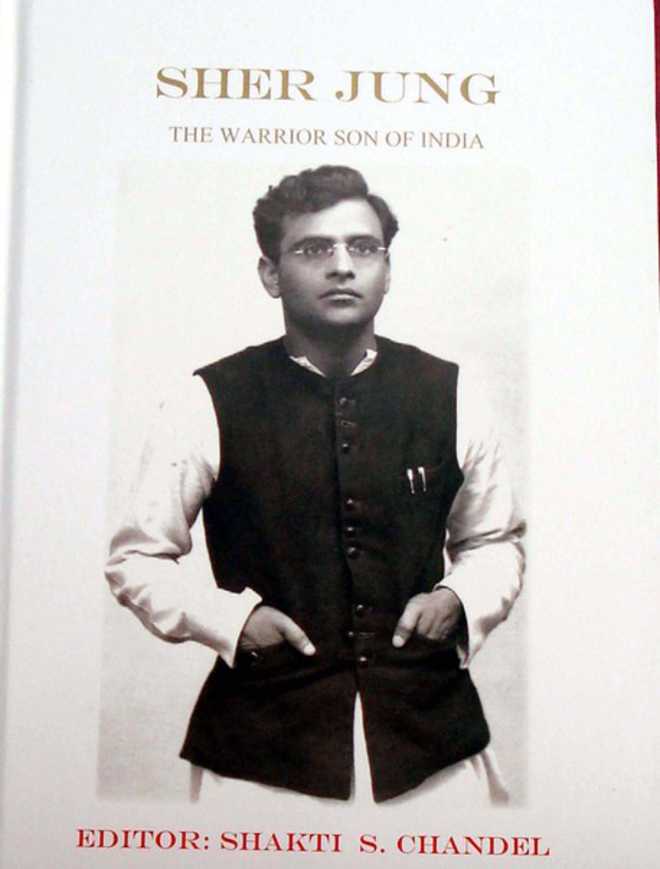Shriniwas Joshi
No other writer than Agyeya has characterised Sher Jung better: “As a child, he defied elders; as high-caste, he was anti-social order system; as courtier, he was anti-princedom; as thinker, he was anti-conservatism; as citizen, he was anti-society; as subject, he was anti-establishment; as prisoner, he was anti-government. Leading the life of a rebel, he got tired, got disappointed, cried sometimes, failed often, but never lost the zest.”
Sher Jung was born at Nahan in November 1906 to Chaudhry Pratap Singh, who was collector in the princely state of Sirmaur. Shakti Chandel writes: “Being of rebellious nature, Sher Jung refused to accept reprimanding behaviour of his teacher and in protest left school when he was in the fourth class. Free from the bonds of school routines, he became a wanderer in the jungles of the picturesque Shivalik hills. He loved nature and its beauties. However, his love for reading and writing continued. His father was a scholar of Farsi and Urdu, the languages that he learnt from him. Later, he learnt German, Hindi and Bengali in jail.” He learnt Hindi in jail in the 1930s from his jail-mate Agyeya and taught him Urdu. Sher Jung used to write Urdu poetry under the penname of ‘Naqquash’.
His books are “Tryst with Tigers”, “Rambling in Tigerland” and “Gunlore”. Was Sher Jung a hunter to write on tigers? Yes, he was. He had inherited a love for hunting tigers from his forefathers. His first hunt of a tiger was in 1920 at the age of 14. He killed many tigers during his lifetime, but only those that were either man-eaters or cattle-eaters. Otherwise, he opposed poaching and was a conservationist.
His ancestral village was Haripur in Sirmaur district and Professor Nirmala recalled that when, as his beloved, she used to visit him in jail he would talk of the creepers and plants there; of nearby jungle and his ramblings around. His body was behind bars, but his soul was free to roam in nature. When he came out of jail, he married Nirmala on May 12, 1938, and the couple came to Sirmaur to activate the Praja Mandal Movement. Then she went to Delhi to serve as Lecturer/Vice-Principal at Indraprastha College from 1939 to 1983.
Liberty, Equality and Fraternity became the glossary of Sher Jung because he had spent his formative years with a French tutor who infused in him the spirit of the French Revolution. He befriended Bhagat Singh and Batukeshwar Dutt in Lahore and joined the Hindostan Socialist Republican Association aimed at arousing a sense of anti-British attitude among the common masses. He looted an Ahmedgarh train to arrange money for getting Bhagat Singh and his associates released from Lahore Jail and then got lost hiding in the forests of Nahan. The clueless British Police put an award of Rs 30,000 on his head, when he came to the fore so that the party could get the award-money to be utilised for its activities. He was sentenced to death, later commuted to life imprisonment. Inder Kumar Gujral, former Prime Minister, writes about him: “When I joined college in Lahore, the youth would sing songs of Sher Jung’s bravery.”
Besides editing “Chingari”, an Urdu journal from Dehradun, he has to his credit 10 published works in English, Hindi and Urdu, three unpublished works and two translated by Nirmala Jung. The independence of India bestowed greater responsibilities on him. He became in-charge of the refugee camps in Delhi; he raised the Kashmir National Militia to fight against the Mujahideen when they raided Kashmir in 1947. Amazed by his acumen towards warfare, the state government awarded him the rank of Colonel in 1948. He led guerilla units in Goa from 1953 to 1961, also trained and led Muktivahini against the East Pakistan atrocities. He died in 1996, and the last rites of Colonel Jung were performed at Ganguwal (Sirmaur) village.
I have culled this information from the hard-bound bilingual book “Sher Jung” (See Photo) containing 18 articles. Edited by Shakti S Chandel it costs Rs 330 only. He has brought a forgotten, ignored and overlooked gem to surface. Shakti (See Photo), whose earlier work “Bilaspur” has been hailed as master work, deserves kudos for the present compilation too. It merits a space in the bookshelf of each reader.
Unlock Exclusive Insights with The Tribune Premium
Take your experience further with Premium access.
Thought-provoking Opinions, Expert Analysis, In-depth Insights and other Member Only Benefits
Already a Member? Sign In Now










